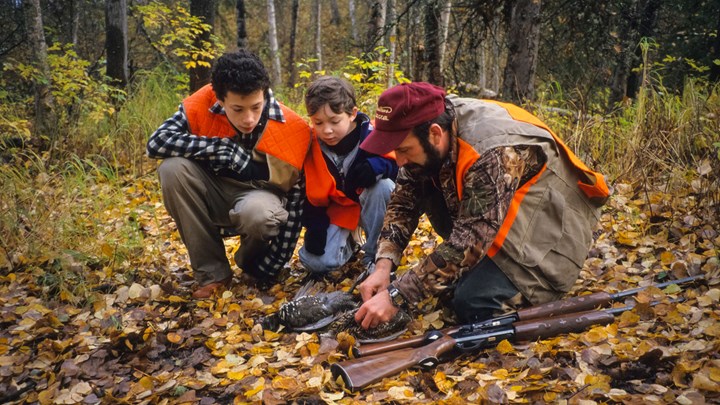
by Cassie Gasaway, 2024-2025 Voice of Leadership Panelist - Friday, September 26, 2025

|
Every time I leave my house, no matter where I go, I see children watching something on a tablet, their parent’s iPhone or a screen hung in a restaurant or waiting room. They’re in this transfixed, paralyzed trance, unaware of their surroundings or people trying to interact with them. I see it everywhere, but I don’t see children playing outside very often, and it’s even more rare to see kids or teenagers trailing behind adults on hunting adventures. According to the U.S. Fish & Wildlife Service’s 2022 National Survey of Fishing, Hunting, and Wildlife-Associated Recreation, the number of children ages 6 to 15 years old who participated in hunting increased from 1.2 million in 2020 to 1.8 million in 2021. However, the pre-pandemic years of 2017 to 2019 had less than 1 million kids participating, and many believe the numbers have returned or declined in recent years. I know many factors may contribute to a decline in youth hunting participation, including urbanization, family priority shifts, complex hunting regulations and alternative recreation options, but I think we’re staring—quite literally—at the biggest culprit. The Kaiser Family Foundation found that kids ages 8 to 18 spend an average of 7.5 hours in front of a screen for entertainment each day. Additionally, the Child Mind Institute found that American children spend only about four to seven minutes playing outside each day. Research finds similar trends for adults, and the daily screen-time statistic continues to increase globally for all age groups, with some reports showing an increase of 30 minutes per day each year. Because people and children spend more time inside watching screens than they spend outside engaging in nature and physical activities, it’s unlikely they’ll be introduced to or interested in any type of hunting. A lot of screen time, such as playing video games, scrolling social media, searching the web or watching TV, music videos or a newsfeed, can negatively affect physical and mental health. Sitting for prolonged periods puts you at risk for increased blood pressure, high blood sugar, excess body fat and unhealthy cholesterol levels. High daily screen time is also associated with fatigue and poor sleep habits. Mentally, daily screen time is linked to increased anxiety and depression, and brain development delays, especially in younger children. On the other hand, studies regularly show time spent outside equals improved sleep, a boosted immune system and reduced stress, anxiety and depression. Plus, many outdoor activities involve physical activity, which promotes cardiovascular health and muscle strength. Research also shows that being in nature can increase focus and concentration, while enhancing creativity and problem-solving skills. No matter how many screens surround us daily, we must intentionally choose to limit screen time with the children in our lives in favor of bringing them outdoors. The more we take kids outside, the more they beg to be there—and the more likely they’ll be interested in hunting, which has additional positive benefits. If you have a child in your life, consider using these tips to transition them off screens and into nature. Trim screen time slowly, but start now. Offer outdoor time frequently. Build on outdoor experiences. Take in-person classes. Invite them hunting. Unfortunately, many American families created an indoor culture centered on screens, but it’s not too late to change. For kids’ physical and mental well-being, reduce screen time and provide them with opportunities to play outdoors. Their comfort in—and connection to nature is the first step to becoming a hunter. About the Author |
E-mail your comments/questions about this site to:
[email protected]
Proudly supported by The NRA Foundation and Friends of NRA fundraising.
